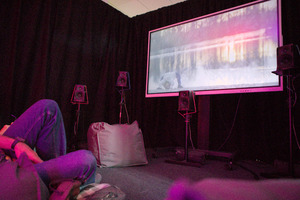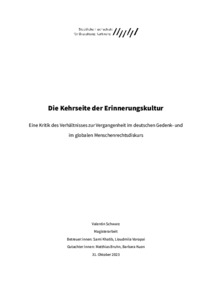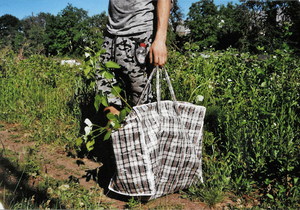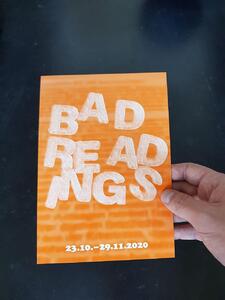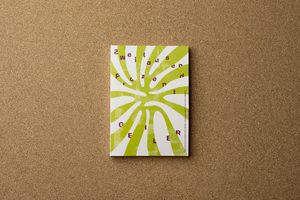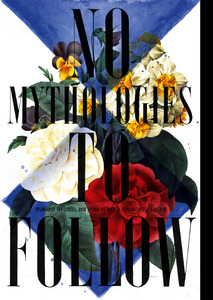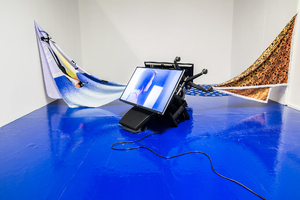DNS #68
Benachbarte Sets (43)Alle Zusammenhänge anzeigen
Diese Sets wurden den gleichen Sets hinzugefügt wie das ausgewählte Set.
43 Inhalte
- Seite 1 von 4
A Factor of Evolution - Triangel Studio
- Titel
- A Factor of Evolution - Triangel Studio
- Titel (en)
- A Factor of Evolution - Triangel Studio
- Autor/in
- Beschreibung (en)
- We live in times of high competition. Survival of the fittest is the omnipresent motto in most fields of human action, especially in the western world. This philosophy was only established about 200 years ago and manifested by Charles Darwin and especially the Social Darwinists at the end of the 19th century. They believed that according to a law of nature, only the physically strongest and most aggressive individuals and species would survive in the struggle for life. Many Social Darwinists justified therefore capitalism and racism with devastating consequences in the coming decades until nowadays.
Peter Kropotkin is attempting in his philosophical work Mutual Aid: A Factor of Evolution (1902) to dismantle their arguments and based on numerous observations of zoologists and anthropologists, he proves, that the fittest species are the most sociable ones and that sociability develops intelligence, which is the most powerful arm in the struggle for survival. This includes insects, animals and humans. Higher moral sentiments and compassion is also essential for survival in all societies.
The ritual burning of sage in nature should help to cleanse the negative energy of social darwinism in our world and make room for a more cooperative society, that will secure the well-being of all members, even the most weak ones and furthermore facilitate a more sustainable, safe and content society.
- We live in times of high competition. Survival of the fittest is the omnipresent motto in most fields of human action, especially in the western world. This philosophy was only established about 200 years ago and manifested by Charles Darwin and especially the Social Darwinists at the end of the 19th century. They believed that according to a law of nature, only the physically strongest and most aggressive individuals and species would survive in the struggle for life. Many Social Darwinists justified therefore capitalism and racism with devastating consequences in the coming decades until nowadays.
- Typ des Projekts/Werks
- Schlagworte
- Datierung
- 07.06.2024
- Mitwirkende
- Beteiligte Institution(en)
- Titel
- A Factor of Evolution - Triangel Studio
- Importiert am
- 05.06.2024
- Übergeordnete Sets
- 1
- Set enthält
- 0 14
Die Kehrseite der Erinnerungskultur
- Titel
- Die Kehrseite der Erinnerungskultur
- Titel (en)
- The Other Side of Erinnerungskultur
- Untertitel
- Eine Kritik des Verhältnisses zur Vergangenheit im deutschen Gedenk- und im globalen Menschenrechtsdiskurs
- Autor/in
- Beschreibung (de)
- In dieser Arbeit setze ich mich mit unterschiedlichen Geschichtsbegriffen auseinander. Dafür dienen mir die Diskussionen um die deutsche Erinnerungskultur als Einstiegspunkt. Das Ziel ist es allerdings nicht, unmittelbar in die polarisierte Debatte einzugreifen. Stattdessen richtet sich der Fokus auf das ideologische Fundament, das verschiedenen Formen, mit der eigenen Geschichte umzugehen, zugrunde liegt. Den theoretischen roten Faden bildet das Werk "After Evil" des Philosophen Robert Meister. Darin kritisiert er die Haltung, die Vergangenheit zwar als schlimm zu verurteilen, aber gleichzeitig auch als abgetrennt von der Gegenwart zu betrachten. Herausgearbeitet werden die Argumente unter anderem anhand von Filmen von Alexander Kluge und Harun Farocki.
- Beschreibung (en)
- In this work, I examine different concepts of history. The discussions surrounding the German culture of remembrance serve as my starting point. However, the aim is not to intervene directly in the polarized debate. Instead, the focus is on the ideological foundations that underlie different ways of dealing with one's own history. The work “After Evil” by philosopher Robert Meister forms the theoretical leitmotif. In it, he criticizes the position of condemning the past as evil, but treating it at the same as something that is separated from the present. The arguments are elaborated on the basis of films by Alexander Kluge and Harun Farocki, among others.
- In this work, I examine different concepts of history. The discussions surrounding the German culture of remembrance serve as my starting point. However, the aim is not to intervene directly in the polarized debate. Instead, the focus is on the ideological foundations that underlie different ways of dealing with one's own history. The work “After Evil” by philosopher Robert Meister forms the theoretical leitmotif. In it, he criticizes the position of condemning the past as evil, but treating it at the same as something that is separated from the present. The arguments are elaborated on the basis of films by Alexander Kluge and Harun Farocki, among others.
- Kategorie
- Typ des Projekts/Werks
- Schlagworte
- Datierung
- 31.10.2023
- Sprache
- Bemerkungen
- Eine kondensierte Fassung des Textes wurde von "Umbau" veröffentlicht: https://umbau.hfg-karlsruhe.de/posts/die-kehrseite…
- Titel
- Die Kehrseite der Erinnerungskultur
- Projektleiter/in
- Semester
- Studiengang
- Typ der Abschlussarbeit
- Importiert am
- 07.06.2024
- Übergeordnete Sets
- 1
- Set enthält
- 0 2
Ungeordnete Zustände
- Titel
- Ungeordnete Zustände
- Titel (en)
- Disorderly Conditions
- Untertitel
- Abtrag I Fragmentierung I Zerfall I Austrag I Verschwinden: Kleingärten an der Stuttgarter Straße Karlsruhe
- Untertitel des Projekts/Werks (en)
- Removal I Fragmentation I Decay I Dismantling I Disappearance: Allotment gardens on Stuttgarter Straße in Karlsruhe
- Autor/in
- Beschreibung (de)
- Die Ausstellung "Ungeordnete Zustände" erzählt in unterschiedlichen Strängen von der Auflösung der Kleingärten an der Stuttgarter Straße in Karlsruhe. Leonie Mühlen beobachtete diese Bewegungen, dokumentierte sie und nahm selbst daran teil. Die gezeigte Sammlung ist ein Versuch den Ort zu begreifen und zu konservieren. Eben diesen Ort im Abbruch, der in seiner Unordnung und seinem Ungehorsam Refugium für viele Dinge und Wesen war.
- Beschreibung (en)
- The exhibition "Ungeordnete Zustände" tells the story of the dissolution of the allotment gardens on Stuttgarter Straße in Karlsruhe in various strands. Leonie Mühlen observed these movements, documented them and took part in them herself. The collection on display is an attempt to understand and preserve the place. Precisely this place in demolition, which in its disorder and disobedience was a refuge for many things and beings.
- Kategorie
- Schlagworte
- Datierung
- 09.06.2021 - 27.06.2021
- Mitwirkende
- Ort: Institution
- Ort
- Luisenstraße 32
- Stadt
- Land
- Titel
- Ungeordnete Zustände
- Projektleiter/in
- Semester
- Studiengang
- Typ der Abschlussarbeit
- Importiert am
- 17.06.2024
- Übergeordnete Sets
- 1
- Set enthält
- 2 17
Bad Readings
- Titel
- Bad Readings
- Autor/in
- Beschreibung (de)
- "Bad Readings" zeigt Manifestationen affektiver und körperlicher Modi der Ausstellungserfahrung, die während eines im August 2020 von Diane Hillebrand einberufenen Workshops am Badischen Kunstverein entstanden. Abseits normierter und normalisierender Rezeptionsmuster näherte sich die "Bad Reading Group" der Ausstellung "If It’s For The People, It Needs To Be Beautiful, She Said" des Künstlers Jeremiah Day, die während der ersten Jahreshälfte im Kunstverein zu sehen war.
- Beschreibung (en)
- "Bad Readings" shows manifestations of affective and physical modes of exhibition experience that emerged during a workshop convened by Diane Hillebrand at Badischer Kunstverein in August 2020. Moving away from standardized and normalizing patterns of reception, the "Bad Reading Group" approached the exhibition "If It's For The People, It Needs To Be Beautiful, She Said" by artist Jeremiah Day, which was on view at the Kunstverein during the first half of the year.
- Kategorie
- Schlagworte
- Datierung
- 23.10.2020 - 29.11.2020
- Mitwirkende
- Ort: Institution
- Stadt
- Land
- Beteiligte Institution(en)
- Titel
- Bad Readings
- Semester
- Studiengang
- Typ der Abschlussarbeit
- Importiert am
- 19.06.2024
- Übergeordnete Sets
- 1
- Set enthält
- 0 15
Zweitausend Prozent GEILER
- Titel
- Zweitausend Prozent GEILER
- Titel (en)
- two thousand percent nicer
- Untertitel
- Über kreative Arbeit und Familie
- Untertitel des Projekts/Werks (en)
- About creative work and family
- Autor/in
- Beschreibung (de)
- "Zweitausend Prozent GEILER – Über kreative Arbeit und Familie" setzt sich mit dem Thema Mutterschaft auseinander. Hierbei liegt der Fokus vor allem auf arbeitenden Müttern in der Kreativbranche. Mutterschaft ist in Arbeitskontexten oftmals mit negativen Vorurteilen behaftet, denen sich dieses Buch stellt, indem es die guten Aspekte von Mutterschaft und ihren Wert für Arbeitswelt und Gesellschaft thematisiert. In Interviews kommen 14 Mütter und ein Vater zu Wort, die ihre Erfahrungen und Perspektiven teilen. Umrahmt werden die Interviewaussagen von Illustrationen und einem Essay der Designjournalistin Zosia Swidlicka aus London. In einem Glossar können die herausgearbeiteten Aspekte nachgeschlagen werden.
- Beschreibung (en)
- “Zweitausend Prozent GEILER - Über kreative Arbeit und Familie” deals with the topic of motherhood. The focus here is primarily on working mothers in the creative industry. Motherhood is often associated with negative prejudices in work contexts, which this book confronts by addressing the good aspects of motherhood and its value for the world of work and society. In interviews, 14 mothers and one father share their experiences and perspectives. The interview statements are framed by illustrations and an essay by design journalist Zosia Swidlicka from London. A glossary provides information on the aspects discussed.
- Kategorie
- Typ des Projekts/Werks
- Schlagworte
- Datierung
- Juli 2024
- Mitwirkende
- Sprache
- Abmessungen
- 13,5cm x 19cm x 1,3cm (BHT)
- Ort: Institution
- Stadt
- Land
- Titel
- Zweitausend Prozent GEILER
- Projektleiter/in
- Semester
- Studiengang
- Typ der Abschlussarbeit
- Importiert am
- 22.07.2024
- Übergeordnete Sets
- 2
- Set enthält
- 0 21
No Mythologies To Follow
- Titel
- No Mythologies To Follow
- Autor/in
- Beschreibung (de)
- "No Mythologies To Follow" zeigt Blumenarrangements für die neun Kulturgüter der Stadt Karlsruhe, die unter Schutz der Haager Konvention stehen.
Die Konvention ist ein völkerrechtlicher Vertrag, der auf Grund der Erfahrungen vorangegangener Weltkriege durch die UNESCO (United Nations Educational, Scientific and Cultural Organization) im Jahr 1954 ins Leben gerufen wurde. Sie stellt (un)bewegliche
Kulturgüter im bewaffneten Konfliktfall unter Schutz. Das heißt, die gelisteten Gebäude dürfen im Kriegsfall von Mitgliedsstaaten nicht geplündert oder attackiert werden, da „jede Schädigung von Kulturgut, gleichgültig welchem Volke es gehört, eine Schädigung des kulturellen Erbes der ganzen Menschheit bedeutet.“ Die Auswahlkriterien für schützenswertes Kulturgut sind dabei nicht immer klar nachzuvollziehen und zeigen, dass Kultur und ihre Bewertung stets an die jeweilige Gesellschaft und ihr Zeitverständnis gebunden ist. Nach der Haager Konvention gibt es Kulturgüter deren „Erhaltung (…) für alle Völker der Welt von großer Bedeutung ist.“
Die Blumenarrangements werden in der Ausstellung zu Akteuren, die für einen anderen Umgang mit Kulturgut stehen. Durch sie wird Vergänglichkeit artikuliert.
Zitate aus: Konvention zum Schutz von Kulturgut bei bewaffneten Konflikten – Haager Konvention vom 14. Mai 1954.
- "No Mythologies To Follow" zeigt Blumenarrangements für die neun Kulturgüter der Stadt Karlsruhe, die unter Schutz der Haager Konvention stehen.
- Beschreibung (en)
- “No Mythologies To Follow” shows flower arrangements for the nine cultural assets of the city of Karlsruhe that are protected by the Hague Convention.
The Convention is a treaty under international law that was brought into being by UNESCO (United Nations Educational, Scientific and Cultural Organization) in 1954 as a result of the experiences of previous world wars. It provides (in)movable
cultural property under protection in the event of armed conflict. This means that the listed buildings may not be looted or attacked by member states in the event of war, as “any damage to cultural property, regardless of the people to whom it belongs, means damage to the cultural heritage of all mankind.” The selection criteria for cultural property worthy of protection are not always clear and show that culture and its evaluation are always linked to the respective society and its understanding of the times.
is bound to the respective society and its understanding of time. According to the Hague Convention, there are cultural assets whose “preservation (...) is of great importance to all peoples of the world.”
In the exhibition, the flower arrangements become actors that stand for a different approach to cultural assets. They articulate transience.
Quotes from: Convention for the Protection of Cultural Property in the Event of Armed Conflict - Hague Convention of May 14, 1954.
- “No Mythologies To Follow” shows flower arrangements for the nine cultural assets of the city of Karlsruhe that are protected by the Hague Convention.
- Kategorie
- Typ des Projekts/Werks
- Schlagworte
- Mitwirkende
- Dank an
- Harald Bogdan
- Michael Clegg
- Anja Dorn
- Pham Minh Duc
- Friedemann Dupelius
- Lotte Effinger
- Susan Funk
- Hasan Halilovic
- Korbinian Herlein
- Katharina Hoth
- Burkhard Hoth
- Erika Hoth
- Achim Kaltwasser
- Wilfried Kuehn
- Barbara Kuon
- Gisbert Laaber
- Armin Linke
- Henrike Mall
- Isabel Mehl
- Nicolas Rauch
- Gerald Reinhardt
- Christiane Riedel
- Thomas Rustemeyer
- Martina Stern
- Felicitas Wetzel
- Tobias Wootton
- Emre Yilmaz
- Ort: Institution
- Ort
- Ausstellungsraum EG
- Stadt
- Beteiligte Institution(en)
- Titel
- No Mythologies To Follow
- Semester
- Studiengang
- Typ der Abschlussarbeit
- Importiert am
- 30.07.2024
- Übergeordnete Sets
- 2
- Set enthält
- 6 6
Oberfläche schwarz/blau/grün
- Titel
- Oberfläche schwarz/blau/grün
- Titel (en)
- Surface Black/Blue/Green
- Autor/in
- Beschreibung (de)
- Bei der 2-Kanal-Videoinstallation „Oberfläche schwarz/blau/grün“ zum Thema Migration werden zwei Situationen betrachtet und einander gegenübergestellt: Migration von einem Land in ein anderes und Migration auf einen anderen Planeten.
- Beschreibung (en)
- The two-channel video installation is about migration, in which two situations are considered and contrasted: migration from one country to another and migration to another planet.
- Kategorie
- Schlagworte
- Titel
- Oberfläche schwarz/blau/grün
- Projektleiter/in
- Semester
- Studiengang
- Typ der Abschlussarbeit
- Importiert am
- 01.08.2024
- Übergeordnete Sets
- 1
- Set enthält
- 1 10
